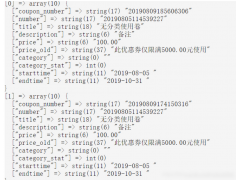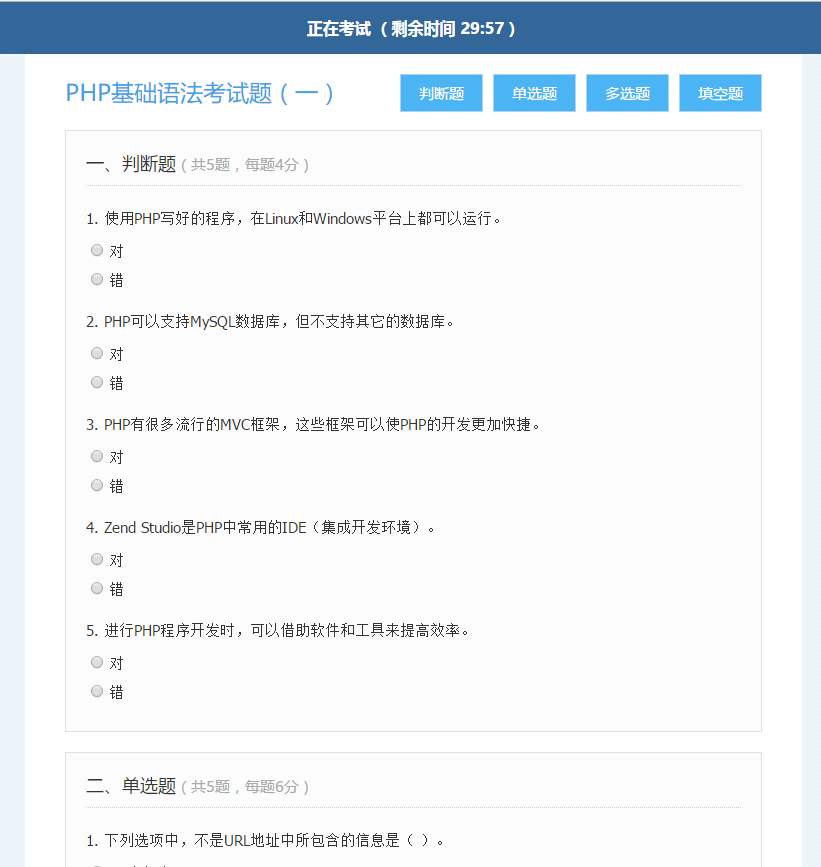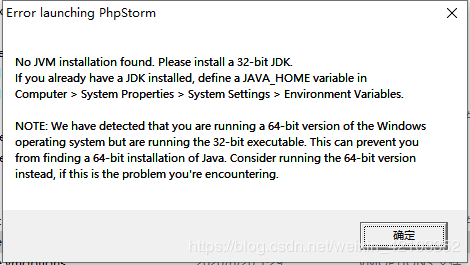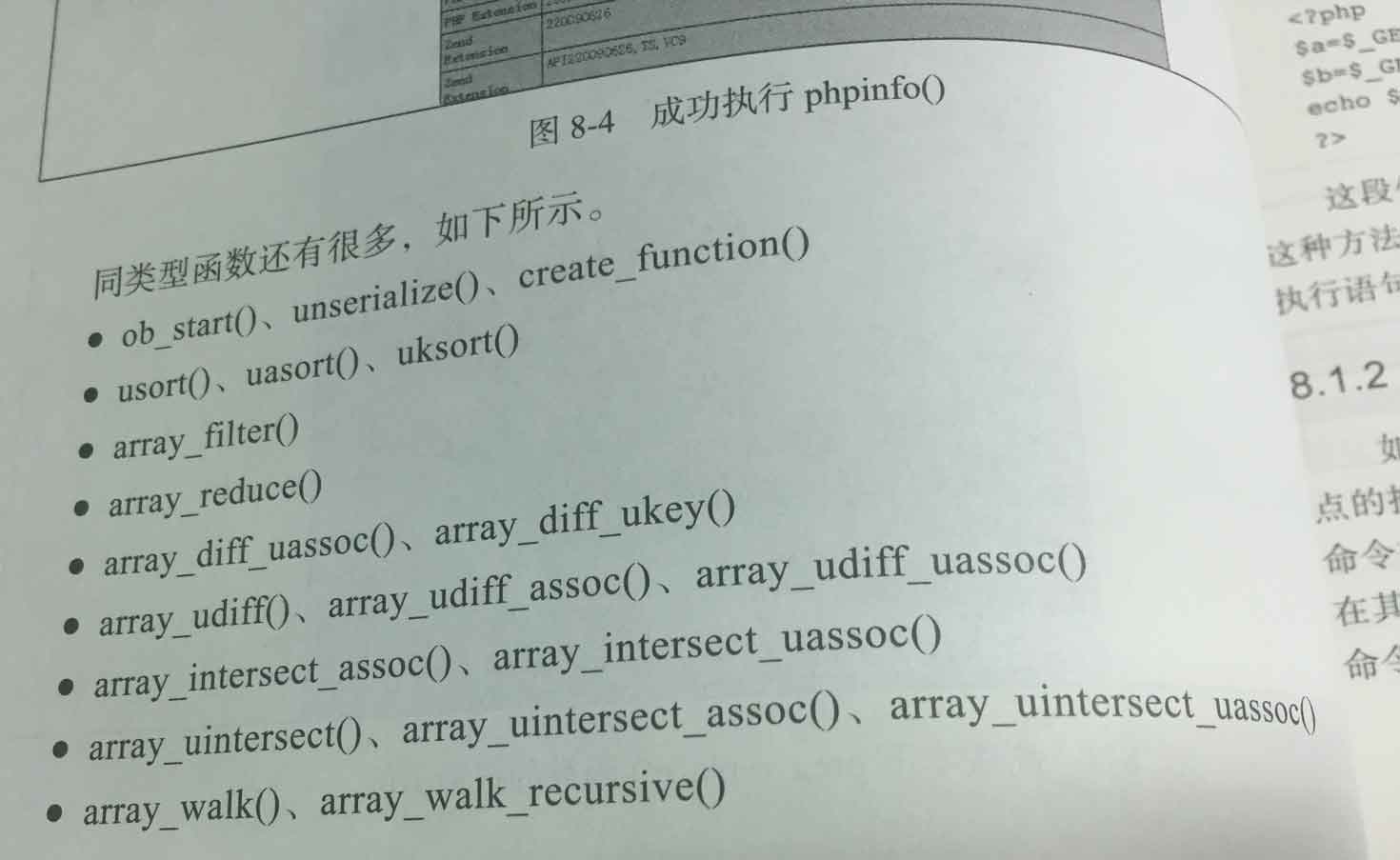CSV(逗号分隔值)文件是使用逗号分隔信息的文本文件。该文件的每一行都是一条数据记录,也就意味着它可以用于以表格的形式展现信息。本文主要介绍了PHP读取和写入CSV文件的方法,需要的可以参考一下
1. 什么是 CSV 文件
CSV(逗号分隔值)文件是使用逗号分隔信息的文本文件。该文件的每一行都是一条数据记录,也就意味着它可以用于以表格的形式展现信息。
2. 从 CSV 文件中读取数据
我将使用内置函数 file 从 CSV 文件中读取数据,然后使用 str_getcsv() 解析包含逗号的字符串。
在介绍如何使用str_getcsv() 函数之前,我想向你介绍如何输出 CSV 文件中的数据。
<?php
if($_FILES){
var_dump(file($_FILES['file']['tmp_name'], FILE_IGNORE_NEW_LINES | FILE_SKIP_EMPTY_LINES));
}
?>
<html>
<body>
<form method="post" enctype="multipart/form-data">
<input type="file" name="file" />
<button>upload</button>
</form>
</body>
</html>当我使用上面的代码上传文件时,输出以下数据:

如图所示,每个字符串中都有逗号,每个逗号将一条信息与另一条信息隔开。
使用 array_map() 函数,并且 str_getcsv() 作为回调函数,该回调将解析每个具有逗号的字符串并将它们分隔在一个数组中。
if($_FILES){
//loop through the csv file into an array
$theCSV = array_map('str_getcsv', file($_FILES['file']['tmp_name'], FILE_IGNORE_NEW_LINES | FILE_SKIP_EMPTY_LINES));
//dump result
var_dump($theCSV);
}输出如下:
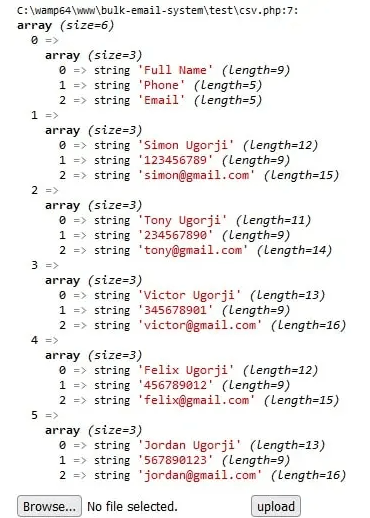
输出的数据看起来比之前要好得多,我们将列标题(全名、QQ、电子邮件)作为该数组的第一个元素。
我们使用 array_walk() 函数遍历此数组 ,然后提供一个回调函数,它将列标题(全名、QQ、电子邮件)和每个 CSV 数据组合为一个新数组。
if($_FILES){
//loop through the csv file into an array
$theCSV = array_map('str_getcsv', file($_FILES['file']['tmp_name'], FILE_IGNORE_NEW_LINES | FILE_SKIP_EMPTY_LINES));
/*Walk through the array and combine the headers which is the first element of our csv array with the rest of the csv data*/
array_walk($theCSV, function(&$ary) use($theCSV) {
$ary = array_combine($theCSV[0], $ary);
});
//dump result
var_dump($theCSV);
}
?>注意,在上面的回调函数中,我使用了变量& 运算符将 $ary 通过引用传递给函数,这使的我们可以修改原始数组。当我们运行上面的代码时,这就是我们的 CSV 数组现在的样子:

注意这里有个问题:这个新数组的第一个元素是表头,因为我们之前让它与 CSV 数组的其他数组组装在了一起。可以使用 array_shift() 来解决这个问题。
if($_FILES){
//loop through the csv file into an array
$theCSV = array_map('str_getcsv', file($_FILES['file']['tmp_name'], FILE_IGNORE_NEW_LINES | FILE_SKIP_EMPTY_LINES));
/*Walk through the array and combine the headers which is the first element of our csv array with the rest of the csv data*/
array_walk($theCSV, function(&$ary) use($theCSV) {
$ary = array_combine($theCSV[0], $ary);
});
//remove column headers which is the first element
array_shift($theCSV);
//dump result
var_dump($theCSV);
}这就是我们最终的 CSV 数组的样子

将上面的代码封装成一个函数,如下:
function readCSV($file){
if(empty($file) || !file_exists($file)) return;
//store the column headers
$headers = null;
$theCSV = array_map('str_getcsv', file($file, FILE_IGNORE_NEW_LINES | FILE_SKIP_EMPTY_LINES));
/*Walk through the array and combine the headers which is the first element of our csv array with the rest of the csv data*/
array_walk($theCSV, function(&$ary) use($theCSV, &$headers) {
$ary = array_combine($theCSV[0], $ary);
//store the headers
$headers = $theCSV[0];
});
//remove column headers which is the first element of our csv array
array_shift($theCSV);
//return data
return array(
"headers" => $headers,
"data" => $theCSV
);
}3. 将数据写入 CSV 文件
将数据写入 CSV 文件,其逻辑是使用 fopen() 函数以附加模式打开 CSV 文件, 然后用 fputcsv() 解析我们要写入 CSV 文件的数据,然后此方法将这些数据写入文件流当中。
if($_SERVER['REQUEST_METHOD'] == "POST"){
$file = "./my_csv_file.csv";
//loop through the csv file into an array
$csvData = readCSV($file);
//create array to store the new data
$newData = [];
//loop through headers and then add values as a new array
foreach($csvData['headers'] as $index => $key){
if($key == 'Full Name'){
$newData[$key] = $_POST['full_name'];
}elseif($key == 'Email'){
$newData[$key] = $_POST['email'];
}elseif($key == 'Phone'){
$newData[$key] = $_POST['phone'];
}else{
$newData[$key] = '';
}
}
var_dump($newData);
}如图所示就是我们将写入到 CSV 文件的数组的数据
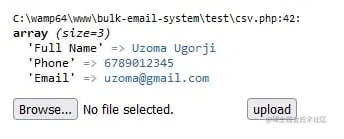
在我们将这些数据写入到 CSV 文件之前,我们必须去掉 key,我们可以使用 array_values() 函数
if($_SERVER['REQUEST_METHOD'] == "POST"){
$file = "./my_csv_file.csv";
//loop through the csv file into an array
$csvData = readCSV($file);
//create array to store the new data
$newData = [];
//loop through headers and then add values as a new array
foreach($csvData['headers'] as $index => $key){
if($key == 'Full Name'){
$newData[$key] = $_POST['full_name'];
}elseif($key == 'Email'){
$newData[$key] = $_POST['email'];
}elseif($key == 'Phone'){
$newData[$key] = $_POST['phone'];
}else{
$newData[$key] = '';
}
}
//open the csv file as in append mode
$fp = fopen($file, 'a+');
//remove keys from new data
$newData = array_values($newData);
//append data to csv file
fputcsv($f, $newData);
//close the resource
fclose($fp);
}不出意外的话,数据就会成功写入到 CSV 文件当中去了。

以上就是PHP读取和写入CSV文件的示例代码的详细内容,更多关于PHP CSV文件的资料请关注编程学习网其它相关文章!
本文标题为:PHP读取和写入CSV文件的示例代码


基础教程推荐
- php实现数组筛选奇数和偶数示例 2024-02-05
- php数组函数序列之array_sum() – 计算数组元素值之和 2024-01-15
- 设定php简写功能的方法 2023-03-17
- PHP手机短信验证码实现流程详解 2022-10-18
- PHP实现抽奖系统的示例代码 2023-06-26
- PHP实现文件下载【实例分享】 2024-04-27
- PHP+MySQL+sphinx+scws实现全文检索功能详解 2023-01-31
- php实现构建排除当前元素的乘积数组方法 2022-11-23
- PHP判断一个字符串是否是回文字符串的方法 2024-01-31
- Yii框架连表查询操作示例 2023-02-13








